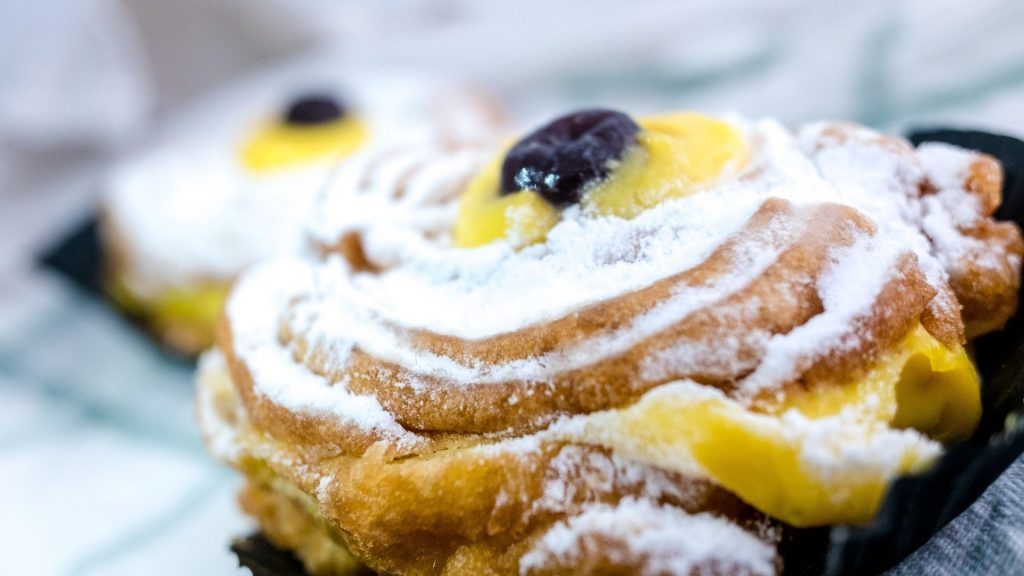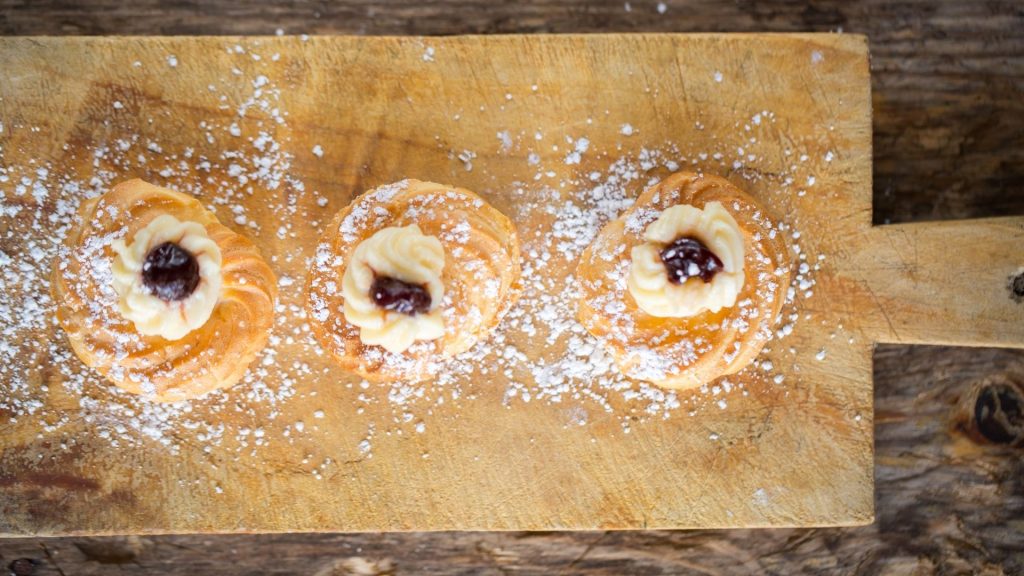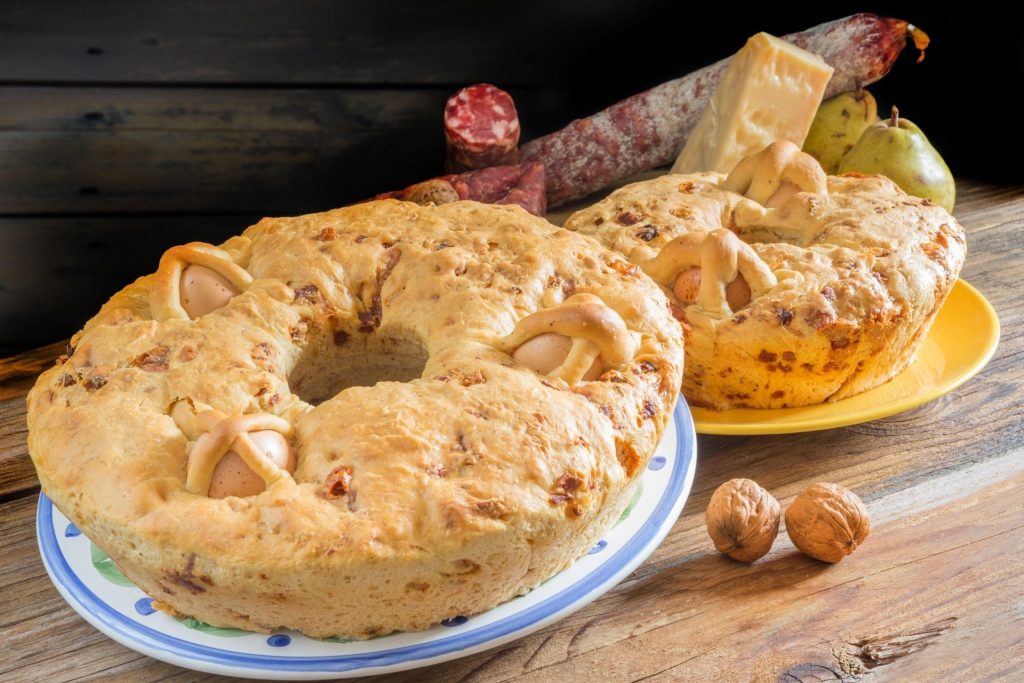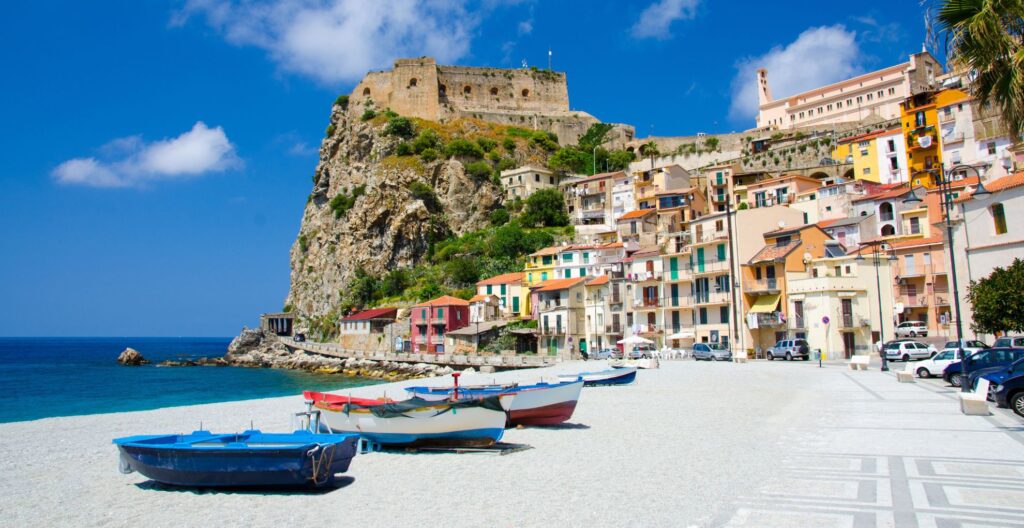The zeppola di san Giuseppe is a typical sweet of the Campania region’s pastry tradition, spread with some variations throughout most of southern Italy.
The zeppole di San Giuseppe are fried cakes made of choux pastry, circular in shape and with a central hole, decorated with wisps of custard with a black cherry in syrup on top and dusted with icing sugar.

Typically fried, in modern times a less calorific baked variant has become popular.
The recipe is very old, as Goethe, the famous German writer, tells us during the stage of his grand tour in Italy of the preparation of zeppole on 19 March 1787 (St Joseph’s Day). “Today is the feast day of the patron saint of all fryers”, writes Goethe, “that is, those who trade in fried pastries, of a lesser kind, of course (…) Large frying pans stand in front of every door on light ovens. A boy makes doughnuts (zeppole) and throws them into the boiling hot oil”.
In Naples, the name zeppola is also used to refer to pastacresciute, a speciality of typical fryers, made of fried dough similar to that used to make fried pizzas.

Zeppole di San Giuseppe is more than just a dessert; it is a culinary symbol of Southern Italy, deeply intertwined with the culture, history, and traditions of the region. Celebrated annually on March 19, St. Joseph’s Day, these golden, cream-filled pastries have become synonymous with Father’s Day in Italy and represent the festive transition from winter to spring.
The Cultural Significance of St. Joseph’s Day
March 19 is an important date in the Italian calendar, marking the feast day of St. Joseph, the earthly father of Jesus and the patron saint of workers and families. While it is widely recognized as Father’s Day in Italy, its origins stem from ancient pagan traditions associated with the changing seasons.
Before Christianity, Romans celebrated the end of winter and the rebirth of nature with agrarian purification rituals. Large bonfires were lit to burn away remnants of the past season, a symbolic act to welcome spring and ensure fertility for crops. These gatherings were communal and often included food offerings—among them, fried dough drizzled with honey, which many believe to be the precursor to today’s Zeppole di San Giuseppe.
When Christianity spread, these pagan traditions were gradually adapted into religious celebrations. The Catholic Church honored St. Joseph around the same time of year, integrating existing cultural practices into Christian observances. In Southern Italy, bonfires known as Fanoje di San Giuseppe are still lit in various towns, preserving the spirit of these ancient customs.
Origins and Evolution of Zeppole di San Giuseppe
The exact origins of Zeppole di San Giuseppe remain debated, though many credit the Kingdom of Naples as their birthplace. Some culinary historians believe that convents in Naples, such as those of San Gregorio Armeno and Croce di Lucca, were the first to develop the iconic pastry.
One of the earliest references to the holiday and its association with fried pastries comes from the German writer Johann Wolfgang von Goethe. In 1787, while visiting Naples, he documented in his famous Italian Journey the lively street festivities of St. Joseph’s Day. He described how the city’s streets were filled with frying stations where cooks prepared and served golden-brown pastries to eager crowds. His writings capture the vibrant, almost theatrical nature of the celebration.
“Today was also the feast of St. Joseph, patron saint of all fryers, those who trade in fried pastries. Since large flames constantly rise from the black frying oil, all the torments of fire fall under their jurisdiction. Since yesterday, people have adorned the facades of their houses with paintings depicting the souls of purgatory and the Last Judgment, glowing and flaming all around. Large pans rest in front of every door on light stoves. One apprentice makes dough rings and tosses them into the boiling fat. Next to the pan, another retrieves the rings with a fork, passing them to a third, who, using another fork, offers them to passersby. The third and fourth of these apprentices wore curly blonde wigs, which to onlookers seemed like angelic attributes. Others in the group offered wine to the fryers, drank themselves, and shouted in delight: angels, cooks, all shouted. The crowd jostled together, also because every type of fried food was sold more cheaply on this day; a portion of the proceeds was even distributed to the poor.”

Di Christoph Heinrich Kniep (1755–1821) – akg-images.de (direct link)goethe-museum.com (direct link), Pubblico dominio,
Düsseldorf, Goethe-Museum.
The first known written recipe for Zeppole di San Giuseppe dates back to 1837 and appears in the book Cucina Teorico-Pratica by Ippolito Cavalcanti, a Neapolitan nobleman and gastronome.
The Art of Making Zeppole
Zeppole di San Giuseppe are made using a simple but precise combination of ingredients: flour, sugar, eggs, butter, and olive oil. The dough is traditionally deep-fried to create a crispy yet airy texture. Once cooled, the pastries are filled with velvety pastry cream, dusted with powdered sugar, and topped with amarena cherries.
While the classic deep-fried version remains the most popular, variations have emerged over time. In some regions, baked Zeppole (known as zeppole al forno) offer a lighter alternative. Others experiment with fillings, incorporating chocolate, ricotta, or even pistachio cream.
In Puglia, Zeppole are a cherished part of St. Joseph’s Day festivities, often prepared following a distinct regional recipe. Here, the dough includes a touch of lemon zest, and the frying process involves lard rather than olive oil, resulting in a unique flavor profile.
A Taste of Tradition
Whether enjoyed in a bustling Neapolitan pastry shop, a family kitchen in Puglia, or a quaint Sicilian café, Zeppole di San Giuseppe are a delicious reminder of Italy’s deep-rooted traditions. These pastries are not just about indulgence; they are a testament to history, faith, and community.
For travelers exploring Italy in mid-March, tasting a freshly made Zeppola is a must. Beyond its delightful flavor, each bite carries centuries of tradition, making it a sweet way to experience the country’s rich cultural heritage.



